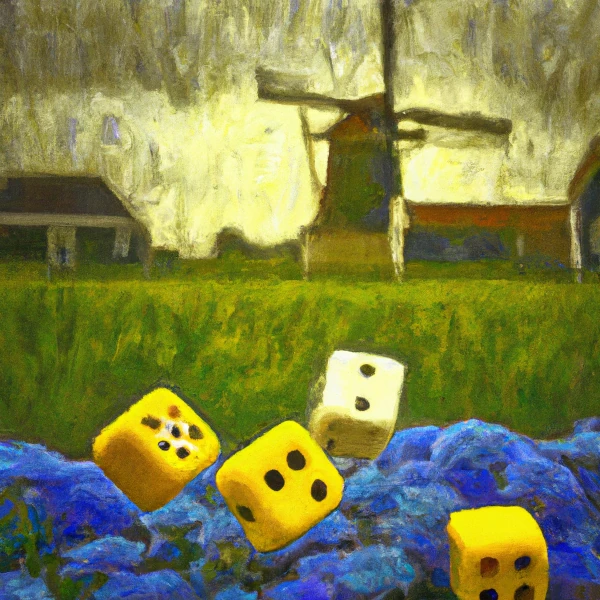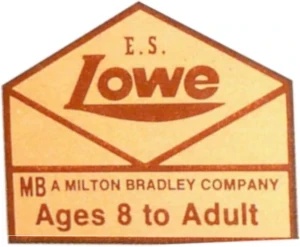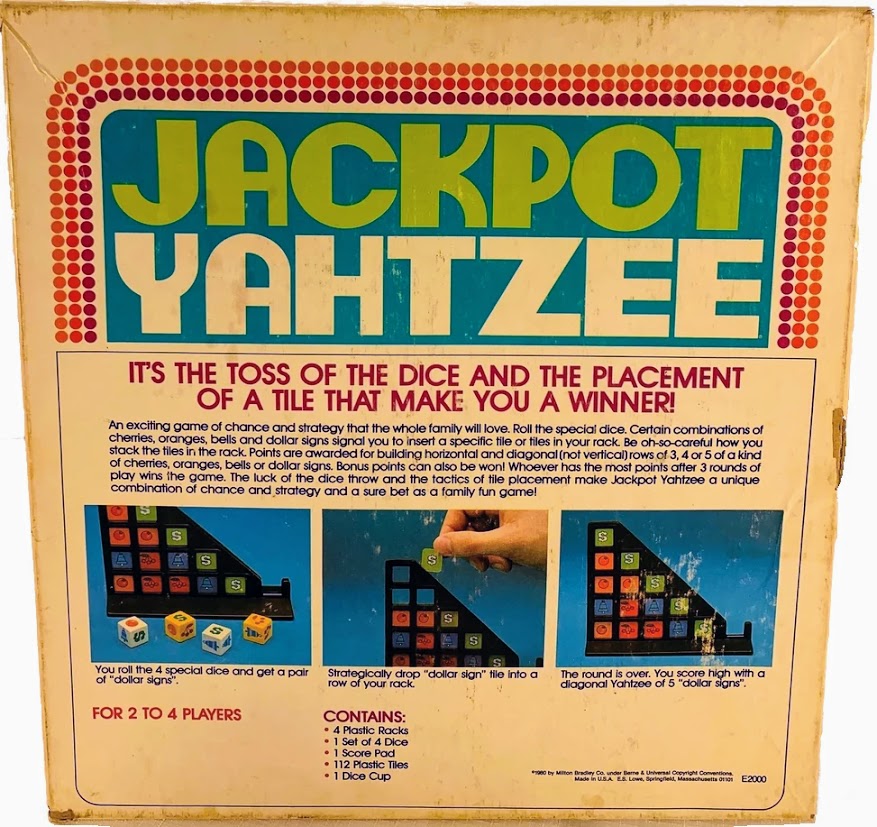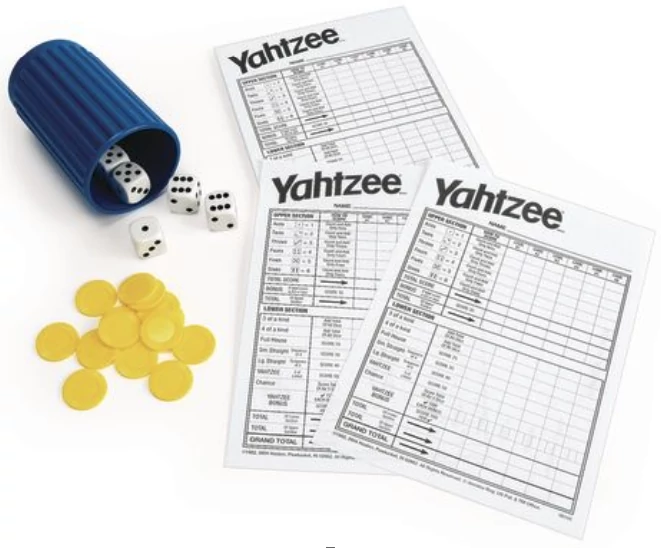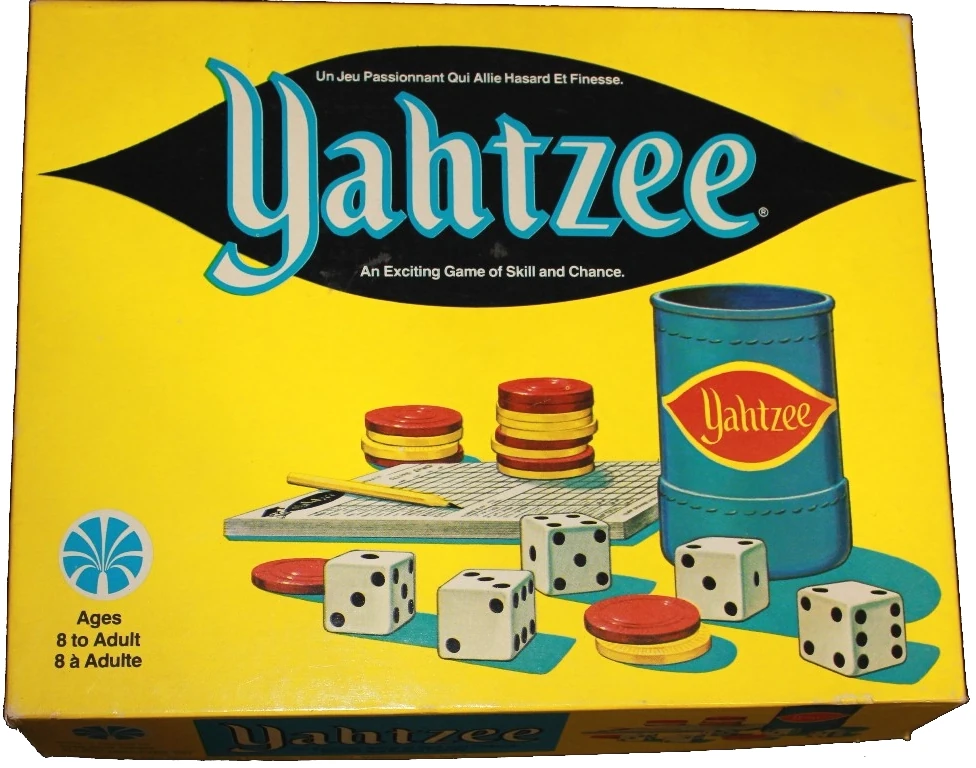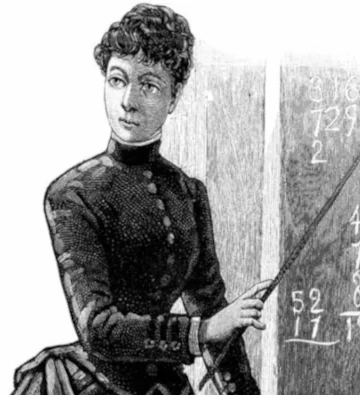The Yahtzee Score Card
Welcome to the top source for printable Yahtzee score cards online! Our downloadable and printable cards simplify game tracking, allowing you to focus on strategy and fun. Download your Yahtzee score card today!
The Yahtzee score card is used to keep track of the scores of players during a game of Yahtzee, making it a vital piece of game equipment. Playing Yahtzee online eliminates the requirement of a physical score sheet but you lose the tactile sensation. A pack of score cards, the Yahtzee scorepad, is included in all Yahtzee sets. The scorepad may seem endless but eventually you will get down to the last few sheets and panic may set in. Take steps now to keep the dice rolling!

Print Yahtzee Score Cards
The easiest way to acquire more Yahtzee score cards, also known as Yahtzee score sheets, is by buying them from the manufacturer. Official score cards are preferred by many players, especially in sanctioned Yahtzee tournaments. According to official Yahtzee rules, however, it's not mandatory to use factory-made sheets. For the cost-conscious consumer or the radical dice roller who rejects the exploitative capitalist system entirely, choose from the printable Yahtzee score sheets below to print free score cards online!
Buy Yahtzee Score Cards Online
When your Yahtzee score card stash is running low, replenish your sheets with Scratch Pad: Yahtzee Score Sheets for the Dice Proletariat
- over 100 pages of new score cards. That's more than 700 games!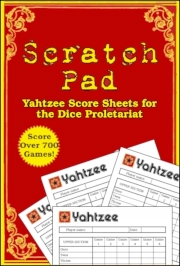
Scratch Pad provides a plethora of score sheets to continue your high score quest. The easy-to-read 6-by-9" pages are non-perforated, ensuring they will remain secure for future generations to enjoy.
Yahtzee is a game that is accessible to players of all ages and skill levels, and it is a game that never gets old. So join the dice revolution today and pick up the Yahtzee score pad trusted by the pros!
- Over 100 pages of Yahtzee Score Cards!
- Score over 700 Games!
- Easy-to-Read 6x9 format!
- Non-perforated and secure!
- The unique combination of luck, skill, and strategy!
- And even more!

Yahtzee Score Card Archive
The Yahtzee score card has been refined over the years to reflect the game's changing design esthetics. The changes are cosmetic only as the game mechanics have remained the same since its introduction in 1956. For archival purposes, some of these iterations are captured below. Note that these official Yahtzee score cards are protected by copyright and are for informational purposes only.
Classic Yahtzee Score Card
There are few greater joys in life than a game of standard Yahtzee. The old-school classic has been around for decades yet just keeps getting better with age. Take a trip back in time with a vintage Yahtzee score card.
Other Yahtzee Score Sheets
Yahtzee has been expanding with new game variants and formats ever since Travel Yahtzee in 1970. Over 50 years later it has cemented its place in popular culture yet continues to evolve. Download variant game score sheets so you never miss a turn. But you won’t find one for 1991's Showdown Yahtzee - it is the only Yahtzee game that doesn’t use a scorecard!
The International Yahtzee Score Card
Yahtzee is the most popular dice game in the world, played by millions of people all across the globe. The rules are easy to learn, and there's always the potential for exciting and unexpected outcomes with every roll of the dice. Because of Yahtzee’s universal appeal, the game has been translated into many languages, making it accessible to people all over the world. This has helped to spread the game's popularity even further, introducing it to new dice-rollers both young and old. Check out an international Yahtzee score card for yourself.
Copyright Notice: All content in the Yahtzee Archive is protected by the applicable trademark and copyright protections of their respective holders. The archive exists for educational, historical, and archival purposes only. Visitors should not reproduce, distribute, or use any copyrighted material from the archive without permission from the rights holders. Images and information are provided for reference and research only.

Yahtzee Score Card: The Breakdown
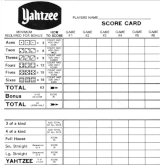
Understanding the Yahtzee score card is key to maximizing your score and becoming a master of the dice. It may appear intimidating for those who are unfamiliar with the rules of the game, but there is no need to worry. Check out The Yahtzee Manifesto’s comprehensive introduction to the Yahtzee score card, breaking down each section and providing clear explanations of how to fill it out correctly:
- Upper Section - Refers to the section of the Yahtzee score card where players can score in each of the following categories: Ones, Twos, Threes, Fours, Fives, and Sixes. The only dice that are counted are those that display the corresponding number on the scorepad.
- Lower Section - Refers to the section of the Yahtzee score card where players can score in the following categories: Three of a Kind, Four of a Kind, Full House, Small Straight, Large Straight, Chance, and Yahtzee.
- Three-of-a-Kind - A score that occurs when a player has three dice of the same value. The total of all five dice are counted and scored.
- Four-of-a-Kind - A score that occurs when a player has four dice of the same value. The total of all five dice are counted and scored.
- Full House - A score that occurs when a player has three of one kind and two of another kind. 25 points.
- Small Straight - A score that occurs when a player has four consecutive values in a row. 30 points.
- Large Straight - A score that occurs when a player has five consecutive values in a row. 40 points.
- Yahtzee - A five-of-a-kind score that occurs when a player rolls five dice of the same value. This is the highest scoring category – 50 points - and the game’s ultimate prize.
- Chance - A score that occurs when a player simply adds up all the dice values. The total of all five dice are counted and scored.
Once you know your way around the Yahtzee score card and start rolling, you'll want to learn how to safeguard your completed score cards. Until Yahtzee is inducted into the National Toy Hall of Fame, it's up to you to preserve these treasures. Read on to find out the best ways to protect your Yahtzee legacy.
Yahtzee Score Card Preservation
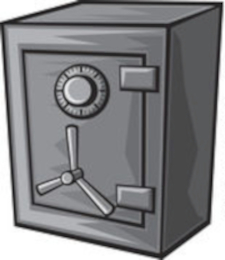
The joy of Yahtzee lingers long after the dice stop rolling. Each score card tells a story of family fun, friendly competition, and those rare, exhilarating moments when luck and skill perfectly align. While it's tempting to discard these paper records, true Yahtzee enthusiasts understand the value of preserving their gaming history.
Why Save Your Score Cards?
- Relive memorable gaming moments
- Track your progress and improvement over time
- Contribute to the broader understanding of Yahtzee's evolution
- Evidence for dispute resolution
- High score commemoration
The World Yahtzee Institute advocates for preserving all score cards, not just high-scoring ones. These records offer valuable insights into the game's history and evolution for future generations. However, careless storage often leads to disaster. The Institute frequently hears from distraught fans whose cherished score cards have fallen victim to various household hazards.
Common Threats to Score Card Preservation:

the importance of proper storage
- Accidental damage (spills, tears, folds)
- Curious children armed with crayons
- Enthusiastic pets with a taste for paper
- Fading ink and paper deterioration over time
Such tragedies typically result from haphazardly tucking completed cards into the game box with dice and other components. To protect your Yahtzee legacy, consider dedicated storage solutions that keep your score cards safe from household hazards. Consider treating your score cards with the same care you'd give to any valuable document. Popular choices include tucking them away in a personal safe, gun locker, jewelry box, underneath the mattress, in an underwear drawer, inside a decoy cookie jar, or even renting a bank's safety deposit box. The key considerations are selecting a spot that will keep the precious records free from moisture, flame, and, perhaps most importantly, potential tampering. For those extra-special games – perhaps your first Yahtzee or a record-breaking score – lamination offers an added layer of protection.
Losing a lifetime's worth of Yahtzee memorabilia to a natural disaster like fire or flood would be devastating enough. However, to have one's meticulously maintained score card archive intentionally altered or destroyed by misguided vandals could potentially inflict serious psychological harm. Common threats include outright theft, malicious score manipulation, and remorseless acts of score data erasure. To deter hooligans, players may wish to invest in an alarm system that will trigger an audible alert whenever the sanctity of the secure score card repository is breached.

Digital Preservation
But even if kept under ideally climate-controlled conditions and shielded from exterior threats, the impermanent nature of physical matter means that those delicate paper Yahtzee score cards will inevitably succumb to the ravages of time and the unstoppable forces of entropy. The browning and brittleness exhibited by antique books, ancient baseball cards, and vintage comic strips illustrate how traditional paper-based materials simply cannot withstand the slow burn of age-related decay in perpetuity. This is where digital preservation comes into play:
- Scan or photograph your cards to create a permanent digital archive
- Use cloud storage to protect your Yahtzee history from local disasters
- Create a spreadsheet to analyze trends in your play over time
To ensure the most ironclad safeguarding of those hard-earned score records, digital storage solutions are rapidly becoming the preferred method for creating a perfectly archivable record of Yahtzee accomplishments throughout the ages.
Preserve Your Yahtzee Score Card Legacy

Preserving your score cards isn't just about protecting the past – it's about enriching your Yahtzee experience in the present and future. Imagine the joy of leafing through years of games, reliving memories of close matches and improbable comebacks. Your carefully preserved records could become a cherished family heirloom, passed down through generations of Yahtzee players.
So the next time you're tempted to crumple up that score card and toss it in the recycling bin, pause for a moment. With a little care and forethought, you can transform that simple sheet of paper into a lasting testament to the timeless joy of Yahtzee. Who knows? Your records might just inspire the next generation of dice-rolling champions or provide valuable insights into the game's evolution.
Remember, your Yahtzee scores are more than just numbers – they're a record of good times, great rolls, and the enduring appeal of this classic game. With foresight and proper management, your Yahtzee scores can live on forever and you can take pride in your contribution to both Yahtzee history and the game’s continued development.

Learn More about Yahtzee Score Sheets
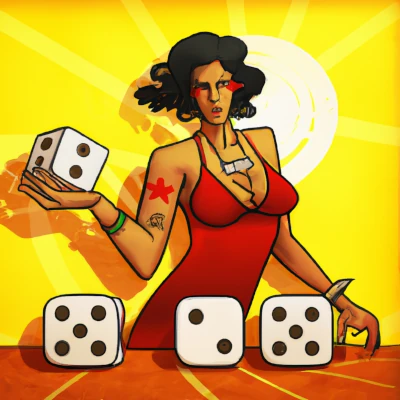
A Yahtzee score card is a sheet of paper used to record and keep track of the scores in the game of Yahtzee. The card is divided into several sections, each corresponding to a different category of rolls, such as "Ones," "Twos," "Threes," "Fours," "Fives," "Sixes," "Three of a Kind," "Four of a Kind," "Full House," "Small Straight," "Large Straight," "Chance," and "Yahtzee." Players roll five dice and then score their roll in the appropriate category, with the goal of earning the highest total score at the end of the game. Put simply, a score card is a vital piece of Yahtzee equipment.

How to Make Your Own Yahtzee Score Card
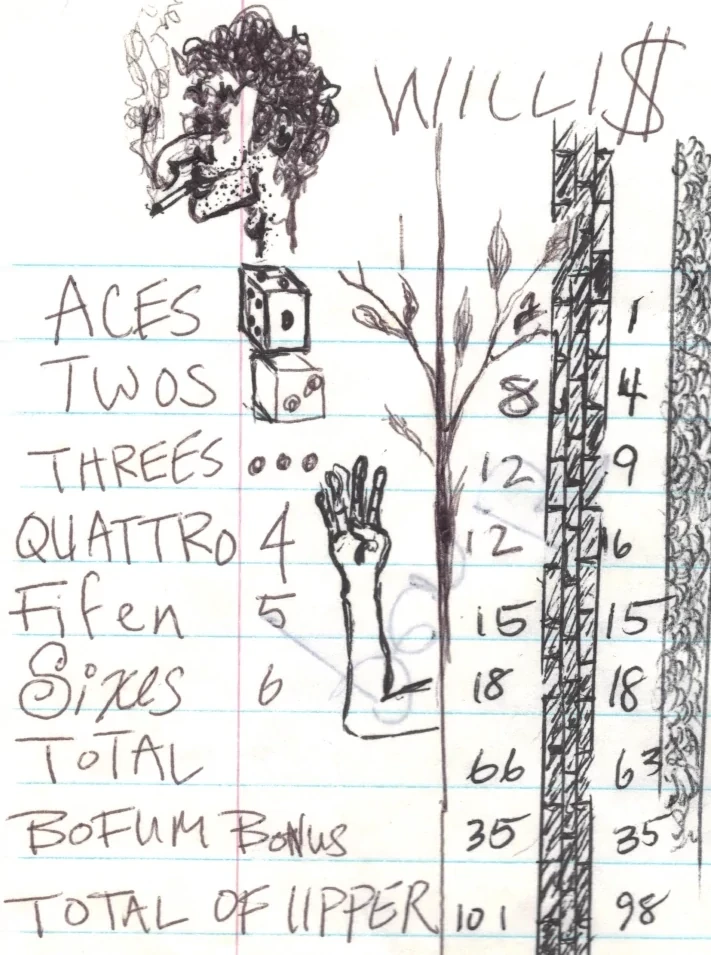
Creating your own Yahtzee score card can be a fun and practical solution, especially when you're out of printer ink or looking for a more personalized gaming experience. This guide will walk you through the process of making a custom score card and offer tips for optimizing your design.
What Makes the Best Yahtzee Score Card?
While preferences vary, the best Yahtzee score cards typically share these qualities:
- Clarity: Easy-to-read font and layout
- Space: Ample room for recording scores
- Durability: Made from sturdy materials like card stock
- Design: Visually appealing and engaging
- Extra features: Rules summary, dry-erase surface, etc.
- Customizability: Option for personal touches
The Yahtzee Manifesto's own book of score cards, Scratch Pad: Yahtzee Score Sheets for the Dice Proletariat ticks all of these boxes, but making your very own Yahtzee score card is a personally rewarding experience. Consider these factors when designing your card to ensure it meets your specific needs and preferences.
Step-by-Step Guide to Creating Your Yahtzee Score Card
Step 1: Choose Your Material
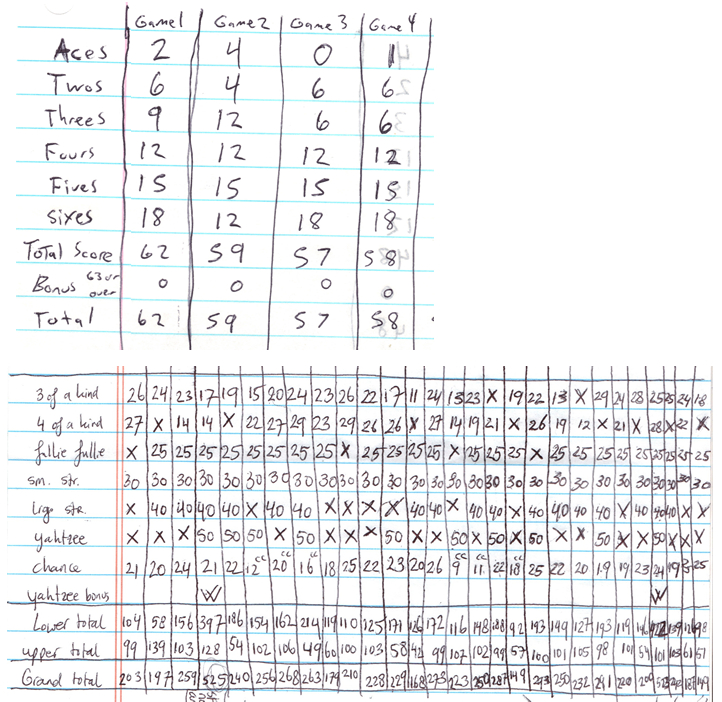
on personal preference
For maximum stability, select a durable material for your score card. Or choose a pre-lined paper to focus on precision. Good otions include:
- Cardboard backing from an old Yahtzee scorepad
- Card stock
- Heavy-weight paper
- Lined notebook paper
- Graph paper
- Blank sheet of printer paper
Whatever material you choose, ensure it can withstand repeated use and potential erasing, as your homemade Yahtzee score card may become a cherished game night staple.
Step 2: Plan Your Layout
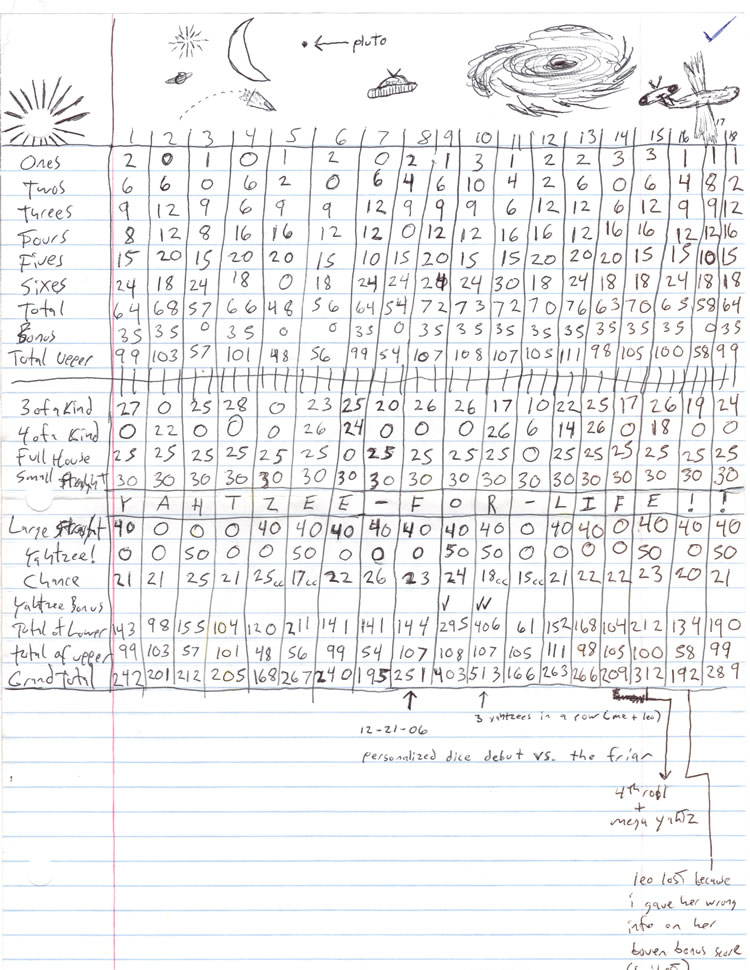
for notes and illustrations
Planning your layout is crucial for creating a functional and visually appealing Yahtzee score card. A well-thought-out design will enhance your gaming experience and make score-keeping more efficient.
Before putting pen to paper, consider these essential layout elements:
- Number of games per sheet: Decide how many game columns you want to include. This often depends on your typical gaming session length.
- Space for player names and dates: Include a header area for this information to keep your games organized.
- Area for bonus Yahtzees: Don't forget to allocate space for these high-scoring rolls!
- Scoring categories: Ensure you have all 13 standard categories in the correct order.
- Column width: Consider your handwriting size when determining column width.
- Optional space for doodles or notes: Some players enjoy having extra room for creativity or game highlights.
- Total score area: Make sure this is prominent and easy to locate.
As you plan, keep in mind the size of your chosen material. You may need to adjust your layout to fit everything comfortably on the page.
Remember the carpenter's motto: "Measure twice, cut once." This wisdom applies perfectly to score card design. Careful planning will result in a more functional and enjoyable Yahtzee score card. Take the time to sketch out your ideas before committing to the final design.
Pro tip: If you're unsure about your layout, try creating a rough draft on scratch paper first. This allows you to test different arrangements and make adjustments before finalizing your design.
Step 3: Create Your Yahtzee Score Card
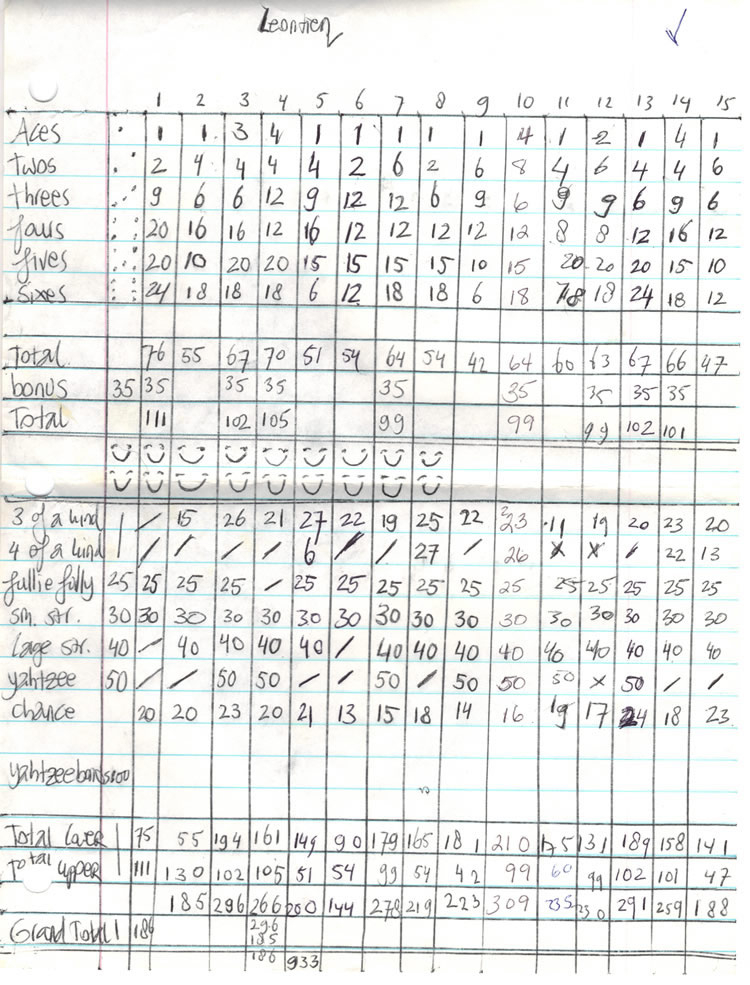
score sheet made with a ruler
To craft your perfect Yahtzee score card, you'll need a few basic supplies:
- Ruler or straight edge: Essential for creating clean, straight lines that will make your score card look professional and be easier to use.
- Writing implements:
- Pencil: Ideal for initial sketching and allows for easy corrections.
- Pen: Great for final designs. Consider using a fine-tipped pen for crisp lines and clear writing.
- Colored markers or pens: Can add visual interest and help distinguish different sections of your score card.
- Eraser: Useful for correcting mistakes or refining your design.
- Optional materials:
- Graph paper: Makes it easier to create evenly spaced lines and boxes.
- Stencils: Can help create neat text or decorative elements.
- Highlighters: Useful for emphasizing certain areas of your score card.
When creating your score card, keep these tips in mind:
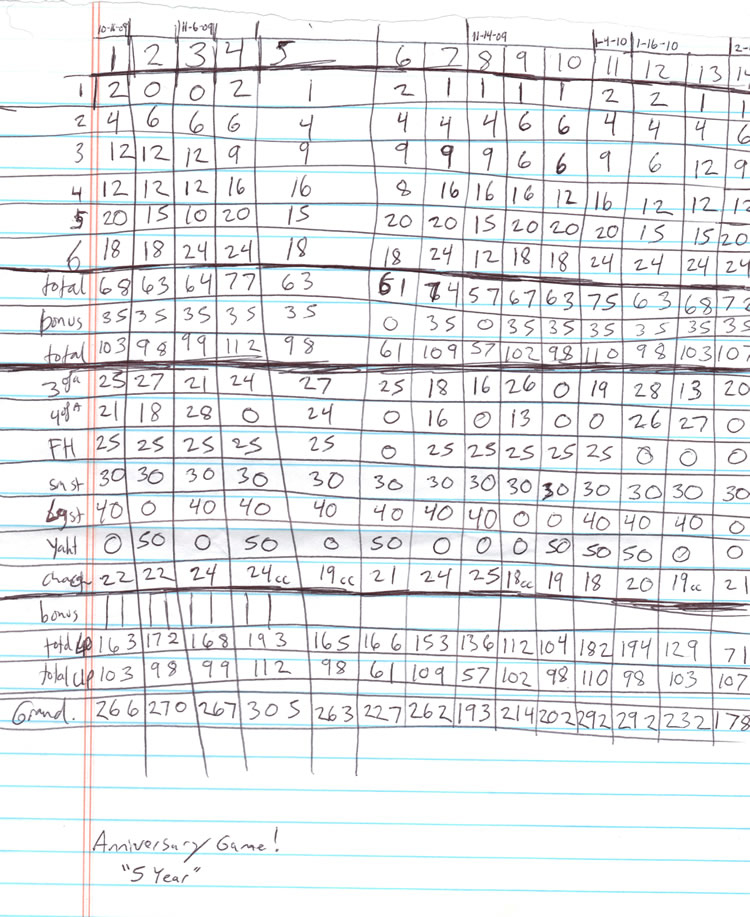
created without a ruler
- Draw straight lines: Use your ruler or straight edge for all lines to ensure a clean, organized look.
- Write clearly: Use your best handwriting or consider using stencils for consistent text.
- Use color strategically: Different colors can help distinguish sections (e.g., upper section vs. lower section) or highlight important areas like the Yahtzee box.
- Consider line weight: Using thicker lines for borders and thinner lines for internal divisions can improve readability.
- Be consistent: Maintain the same style throughout your score card for a cohesive look.
- Leave adequate space: Ensure boxes are large enough for comfortable writing, especially if you plan to use the card for multiple games.
Remember, creating your score card is not just about functionality—it's an opportunity to express your creativity. Don't be afraid to add personal touches like a creative title, a motivational quote, or even small dice illustrations in the corners. Your unique design will make your Yahtzee games even more enjoyable and memorable.
Tips for Maintaining Your Homemade Score Card
To ensure your custom score card lasts, always remember to:
- Store it in a safe, dry place
- Consider laminating for added durability
- Keep it away from food and drinks during gameplay
Share Your Creation!
We'd love to see your homemade Yahtzee score cards! Share a photo of your creation on social media with the hashtag #YahtzeeManifesto or email it to us at admin@yahtzeemanifesto.com.
Remember, the best Yahtzee score card is one that enhances your gaming experience. Keep on rollin'!

Standard Yahtzee Notation
As an additional measure of score conservation, consider converting old score cards into Standard Yahtzee Notation (SYN). SYN was developed during the European ‘Age of Enlightenment’ as a way to apply the latest scientific developments to the preservation of Yahtzee scores. Over the centuries it has become the benchmark method to chronicle Yahtzee scores for future study. Its functional simplicity has since been applied to other games, most notably chess. A major benefit in SYN is its ability to record the sequence of scores in a given game, a capacity not included in the standard Yahtzee score card. Even with the modern advent of the printable Yahtzee scorecard for at-home use, classic standard notation remains a powerful analytical tool.
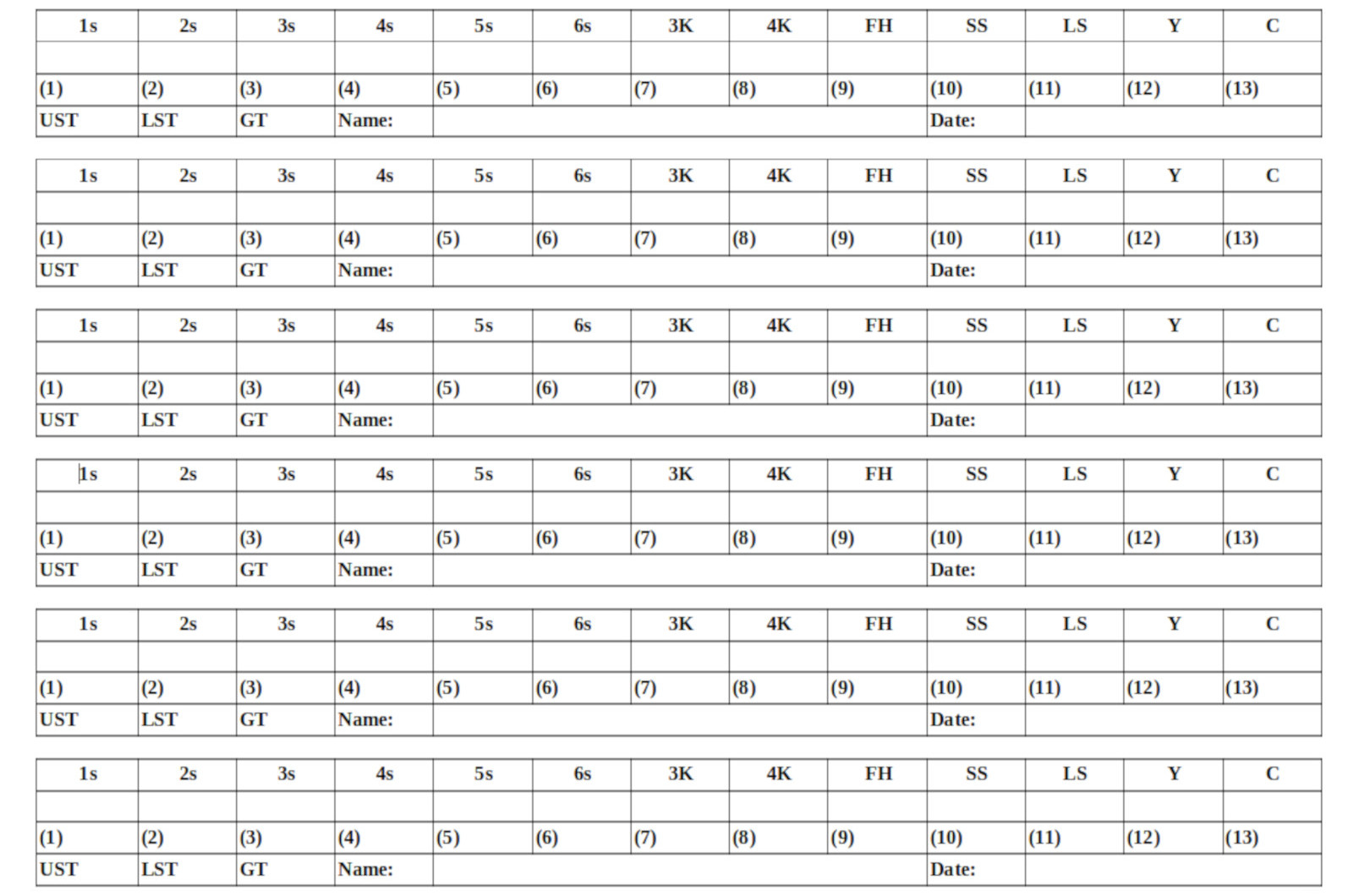
Standard Yahtzee Notation varies from the standard method by using a custom score card to allow the player to record the sequence of their turns. The advantages of capturing this additional information is balanced by a slight increase in the time it takes to record one’s score. The SYN scorecard must be marked twice for each turn – once in the traditional way by scoring category which eases the total score calculation at the end of the game, and again to mark the sequence of the turn. It provides extra insight into a players' tactics and skill level and, as its name suggests, is the standard way to record a Yahtzee game in competitive leagues across the world.
One SYN unit is a record of one game of a single player. The unit consists of sixteen entries - thirteen representing each turn of one traditional Yahtzee game and three for the totals, Upper Section Total (UST), Lower Section Total (LST), and Grand Total (GT). These sixteen entries are indicated by parentheses, which are each followed by the game data. The game data is depicted as an abbreviation of the scoring category marked in a given turn and then its numerical score. The following is an example of one SYN unit:
(1)LS40 (2)3s9 (3)4s12 (4)4K27 (5)Y50 (6)Y100 J-6s30 (7)Y100 J-3K30 (8)SS30 (9)2s4 (10)C19 (11)5s15-B35 (12)FH25 (13)1s0 (UST)105 (LST)421 (GT)526
In this game the player started (1) by rolling a Large Straight (LS) which is always scored as 40 points. The second turn (2) resulted in scoring their Threes (3s) for nine points. Note that this game yielded three consecutive Yahtzees (Y), beginning on turn five (5). The subsequent Yahtzees on turns six (6) and seven (7) are recorded with ‘Y100’ to indicate the Yahtzee Bonus, followed by a ‘J’ notation to record the placement of their Joker score. Not surprisingly, this turned out to be a high-scoring game as indicated by the Grand Total (GT) of 526 in the final entry.
Note in the completed SYN scorecard below that the first two rows are used to record scores by scoring category as on a traditional score card. The third row uses Standard Yahtzee Notation to record the sequence of turns, (1) through (13). The bottom row captures the Upper (UST) and Lower Section Totals (LST) and the Grand Total (GT) of the game.



